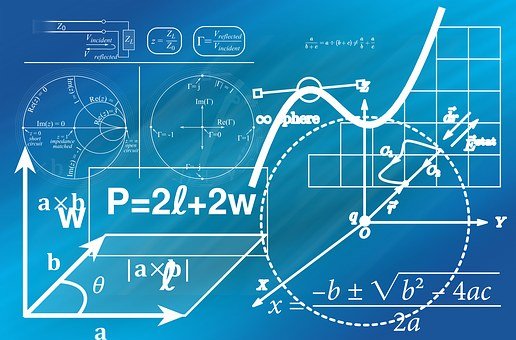Complex Numbers: The True Reality of Imaginary Mathematics
Complex numbers are numbers which are combinations of any real number plus the imaginary number. While difficult to comprehend, imaginary numbers are quite real.
It took mathematicians several millenia to finally come to terms with the fact that not all numbers used in mathematics had to be "real." Just as it was not always clear to the early mathematicians that irrational numbers could exist, many of these early thinkers, had they been aware that something along the lines of an imaginary number could exist, would surely have derided it as foolish.
Once mathematics itself began to grow, both practically and abstractly, however, things were not quite so simple. As early as the 16th century, when mathematicians in Italy first began experimenting with cubic and quartic polynomials, it became clear that certain problems could not be solved in conventional methods without having some way to deal with numbers which did not seem to exist.

source
The Imaginary Number
The answer to these rather intriguing problems, in the end, was the establishment of a new number, denoted as "i" in equations, which is known as the "imaginary number" and represents nothing more than the square root of -1.
Perhaps on the surface this doesn't seem so mysterious, but look a little closer and it is clear where the problem is. By definition, the square root of -1 equals the number which, when multiplied by itself, equals -1. Of course this number doesn't exist, because any number multiplied by itself will always equal a positive number.
And yet, this nonexistent number - truly imaginary - came into being so that it could be used as a mathematical tool within new algebraic problems, even if it didn't necessarily have any meaning in the physical world.
Now, with the creation of the imaginary number (the name itself was coined in 1637 by Rene Descartes), certain problems could be solved which had baffled mathematicians for centuries and could not be solved without resorting to something which, mysteriously, didn't seem to exist, even though the answer which was being sought was clearly a real number.
But what of other nonexistent numbers, such as the square root of -2, -10 or -100? The imaginary number provided a means of writing each of these far more simply as well: The square root of -2 can be written as 2i, the square root of -10 can be written as 10i and the square root of -100, of course, is simply 100i.
Complex Numbers
Now, because imaginary numbers such as these cannot be easily added to real numbers, an entire new system must be created, and these are known as complex numbers. In their simplest forms, complex numbers just like a normal mathematical expression, except that they contain a mixture of both real and imaginary portions. Examples of complex numbers are:
2 + 3i
9-6i + 4xi
Complex numbers such as these can be added, subtracted, multiplied or divided together using simple algebraic rules, and most formulas involving multiple complex numbers can rather simply be simplified into a single complex solution.
Imaginary numbers cannot, of course, be graphed on a normal "real number" line, though mathematicians have compensated for this by providing a separate number line for imaginary numbers, which can be drawn running perpendicular to the real number line. This line begins at zero and generally is pictured running vertically, both positive (2i, 3i, 4i, etc.) and negative (-2i, -3i, -4i, etc.). Then, using both the real number line and the imaginary number line, complex numbers can easily be graphed, just as they would be on a normal Cartesian coordinate system.
Further Uses of Complex Numbers
Surprisingly, there are a great many mathematical applications for complex numbers, both in abstract theoretical mathematics and in mathematical descriptions of the physical universe, which may be surprising.
Several subjects in physics make key use of complex numbers, such as key elements of quantum mechanics, general relativity and fluid dynamics. In addition to this, complex numbers play key role in chaos theory and in fractal geometry.
While the numbers themselves may not possess any concrete meaning in the physical world, they certainly possess more than their share of real mathematical meaning, and have become an integral part of even basic algebra, calculus and geometry, which is why they are often taught rather early on in algebra classes.
While perhaps it is foolish to attempt to picture imaginary or complex numbers in one's head, it is very useful to learn how to use them if one is interested in moving into higher levels of mathematics, or is simply curious to learn how theoretical math is performed.
Reference:
Excellent article. In it, the meaning of the "Complex Number" is explained in a simple but correct way. In such a way that this explanation can successfully reach the majority of readers. Very good. Thanks for sharing.